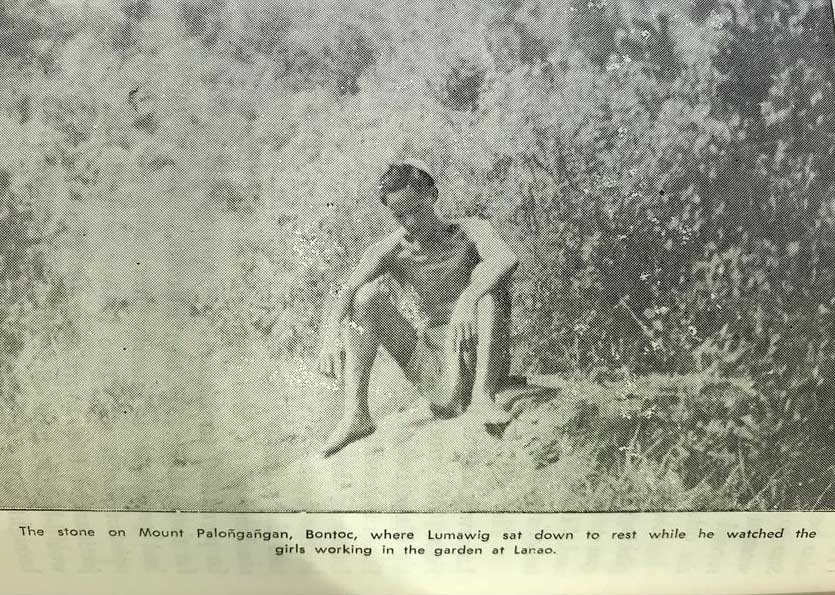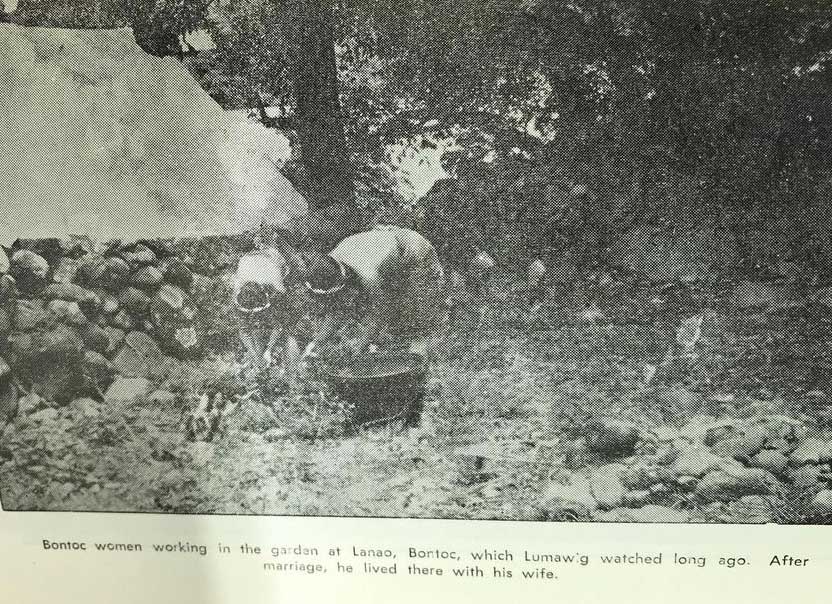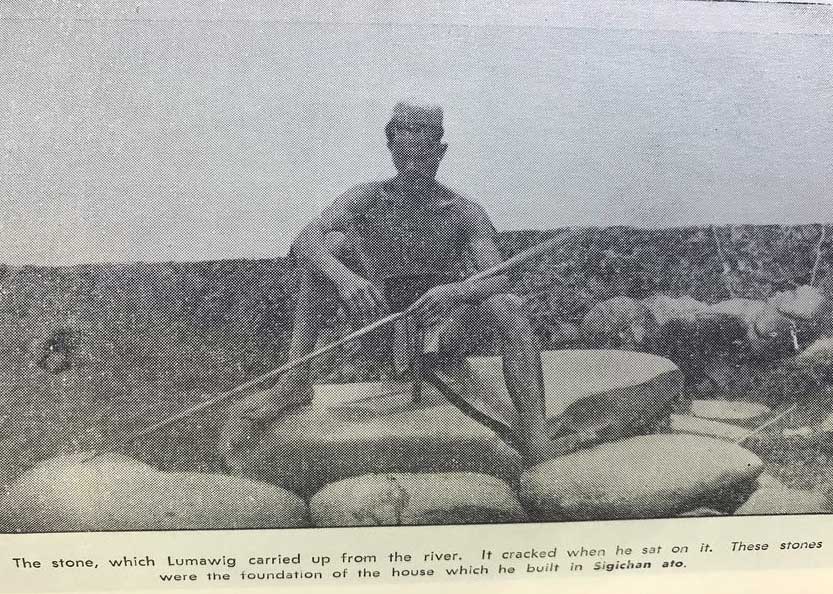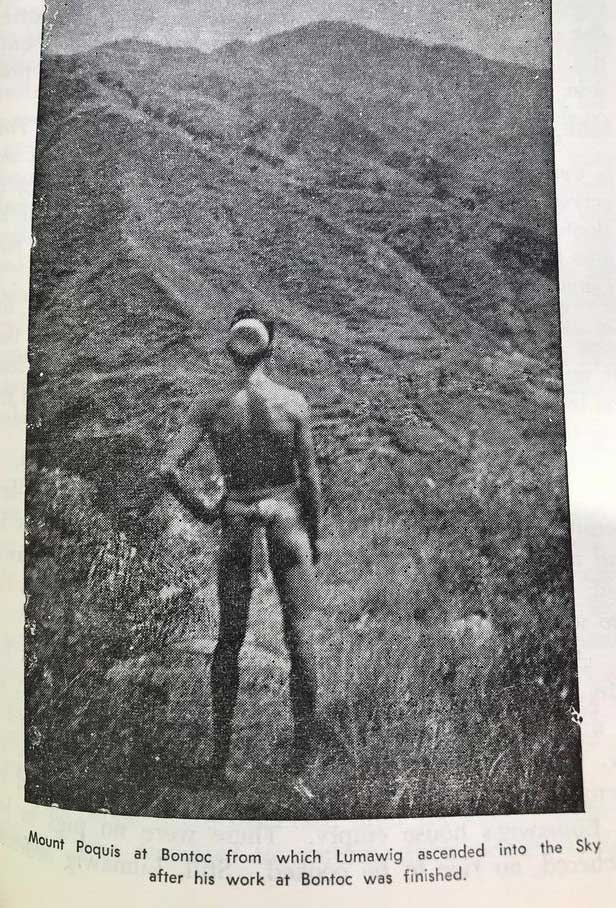Follow in the footsteps of the BONTOC Culture Hero, Lumawig. Your next Philippine adventure…
The pre-Christian Bontoc belief system centers on a hierarchy of spirits, the highest being a supreme deity called Lumawig. Lumawig personifies the forces of nature and is the legendary creator, friend, and teacher of the Bontoc. A hereditary class of priests hold various monthly ceremonies for this deity for their crops, the weather, and for healing. The Bontoc also believe in the “anito”—spirits of the dead who must be consulted before anything important is done. Ancestral anitos are invited to family feasts when a death occurs to ensure the well-being of the deceased’s soul. This is by offering some small amount of food to show that they are invited and not forgotten.
Lumawig is regarded as the savior of the Bontoc Igorot, a ballad, of how in the long ago he came down to earth to marry and teach the Igorots the way of life, is sung as prayer at each cheno. The cheno is a great cañao (feast) given by the wealthy families once in a number of years, at which the marriages of their sons and daughters are duly celebrated.
While reading ‘The Skyland of the Philippines’, I was surprised to discover that it is possible to follow in the footsteps of Lumawig at the actual places the legend takes place.
To supplement the photo captions, I have also given excerpts below from the Legend of Lumawig, as documented by Carmencita Cawed, The Culture of the Bontoc Igorot ( 1972).

Photo 1: As he was resting on a mountain side overlooking Bontoc he saw two sisters working in the fields. Sticking his spear on a rock, he sat down to watch the sisters at work. (To this day, the rock on which he sat is still there. It also bears distinctly the mark of his spear.)

Photo 2: Coming down to Lanao where the two sisters were picking black beans, he struck his spear before him and began to address them. To the younger sister, Lumawig said, “I wish very much to marry you. May I know your father’s name?”

Photo 3: On their way home, Lumawig picked up a stone so huge it could not possibly be lifted by any human being, and carried it with him easily into the barrio and on to the council house, Calatec. Putting down the stone, he advised the sisters to tell their father to place the house ladder out as a way of receiving Lumawig.

Photo 4: Lumawig before his departure to heaven, taught many things to the people of Bontoc. He taught them the art of making rice paddies that can produce large yields. He instructed them how to irrigate their fields, how to cut the rocks in order to build ditches, how to weave baskets, make cloth out of the bark of trees. Also he taught them the methods of blacksmithing, fishing and hunting. He also initiated the ato, a meeting place of the Bontocs at which the interests of the people are discussed.
Read “The Bontoc Legend of Lumawig”
Photos: The Skyland of the Philippines
by Laurence Lee Wilson
Bookman Inc. 1965
Jordan Clark is a Canadian born descendant of Scottish immigrants living on the homelands of the Lekwungen speaking peoples. His interest in Philippine myth and folklore began in 2004. Finding it difficult to track down resources on the topic, he founded The Aswang Project in 2006. Shortly after, he embarked on a 5 year journey, along with producing partner Cheryl Anne del Rosario, to make the 2011 feature length documentary THE ASWANG PHENOMENON – an exploration of the aswang myth and its effects on Philippine society. In 2015 he directed “The Creatures of Philippine Mythology” web-series, which features 3 folkloric beings from the Philippines – the TIKBALANG, KAPRE and BAKUNAWA. Episodes are available to watch on YouTube. Jordan recently oversaw the editing for the English language release of Ferdinand Blumentritt’s DICCIONARIO MITOLÓGICO DE FILIPINAS (Dictionary of Philippine Mythology) and is working on two more releases with fellow creators scheduled for release later this year. When his nose isn’t in a book, he spends time with his amazing Filipina wife of 20 years and their smart and wonderful teenaged daughter.


